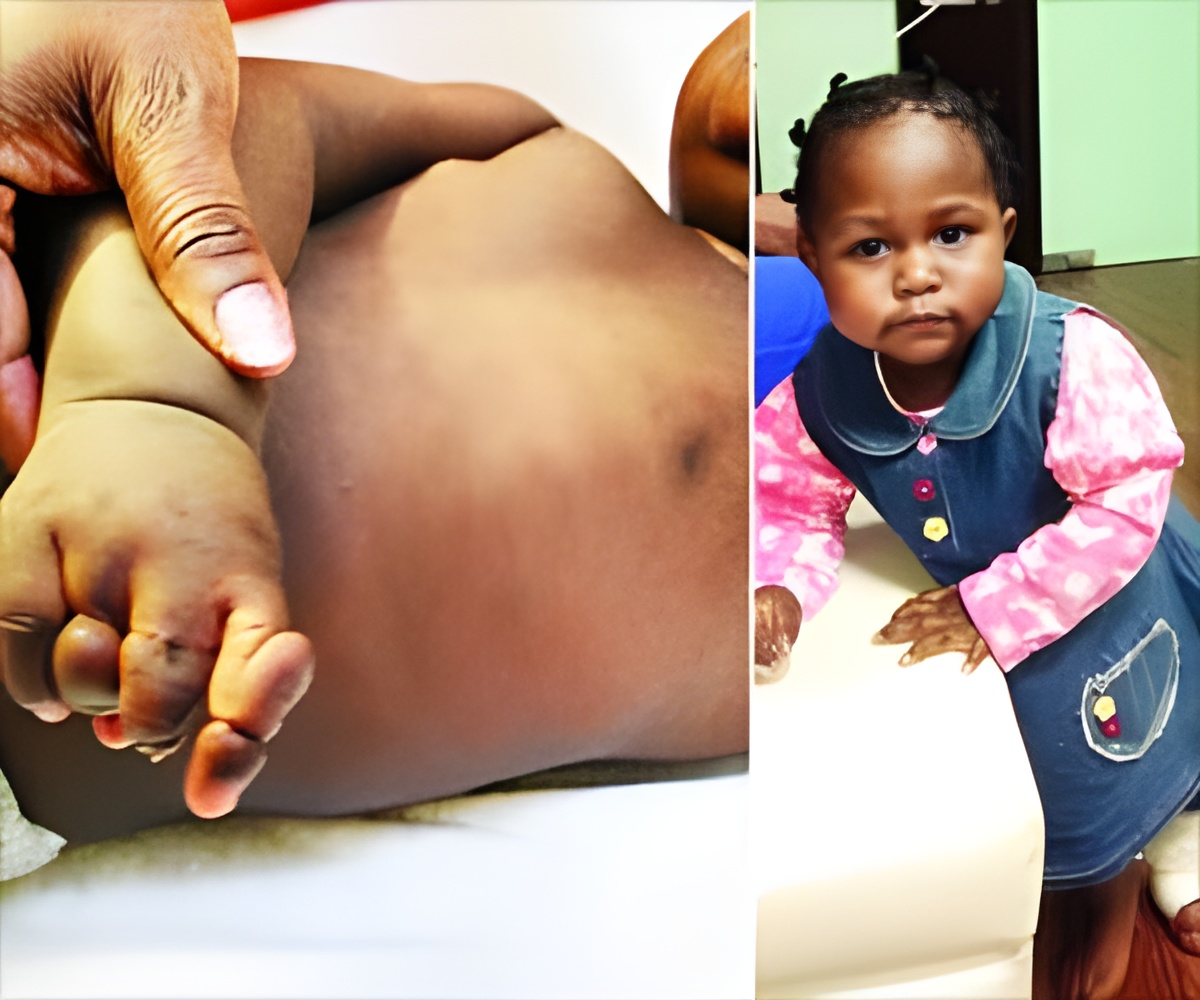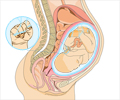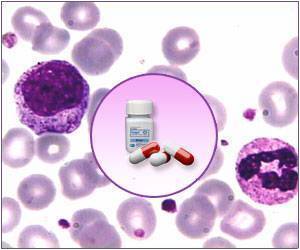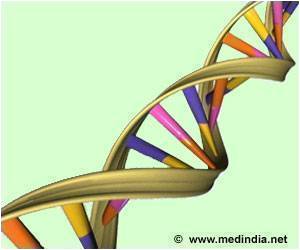Amniotic Band Syndrome in a 15-month Zambia girl was treated for the first time in India. Within a month after treatment, the baby girl manages to walk freely.

‘Zinnia Munthali, a 15-month old baby with Amniotic Band Syndrome was treated successfully with 'Cellular Therapy'.’





She has normal developmental milestones; one of her maternal cousins also faced similar syndrome.Amniotic Band Syndrome (ABS) is a group of congenital malformations, which occur due to an early rupture of the amniotic sac.
The occurrence of ABS is around 1 in 1,200–15,000 live births and it exhibits no special preference for a specific gender or race, according to recent epidemiologic data.
However, some studies report a slight preference for Afro-Caribbean individuals. The pathogenesis of the ABS has not been elucidated, but it probably has a genetic origin.
At seven weeks of age, Zinnia underwent 1st corrective surgery and another at 5th month of age to remove the fibrotic bands in her limbs. However, there was no improvement in the appearance of the bands or symptoms.
Advertisement
Zinnia underwent three sessions of autologous cell-based therapy with platelet-rich plasma injected locally into the affected areas.
Oxygen therapy was advised as an adjunct to cell and scaffold-based therapies, to achieve adequate tissue oxygenation and enhance healing.
Zinnia is undergoing regular physiotherapy rehabilitation as well. Within a month, the fibrotic bands are less visible. Zinnia’s leg movements are free, and no swelling is observed. Itching has reduced considerably.
ABS may occur due to the rupture of the amnion during early pregnancy. The fetus’ arms and legs, tangled around the amniotic bands, maybe amputated during intrauterine development due to loss of blood flow.
The variability in the type and severity of the anomalies caused by this syndrome can be attributed to the stage at which the amniotic membranes rupture.
“Diagnosis of ABS is usually missed, and there are no treatments. Corrective surgeries are complicated and do not give desired results. Baby Zinnia is a rare case and is under treatment using Regenerative Medicine and cell-based technology”, says Dr. Pradeep Mahajan, Regenerative Medicine Researcher, Mumbai.
“Cell-based therapy is proving to be promising even in rare conditions. The reason for this is the inherent healing ability of our body cells and tissues. Zinnia being a young child has benefited from the therapy quite fast. She will require maintenance dose therapy after further evaluation to ensure complete healing of the fibroid bands and achieve optimum functional and cosmetic results”, concludes Dr.Pradeep Mahajan.
Source-Medindia









